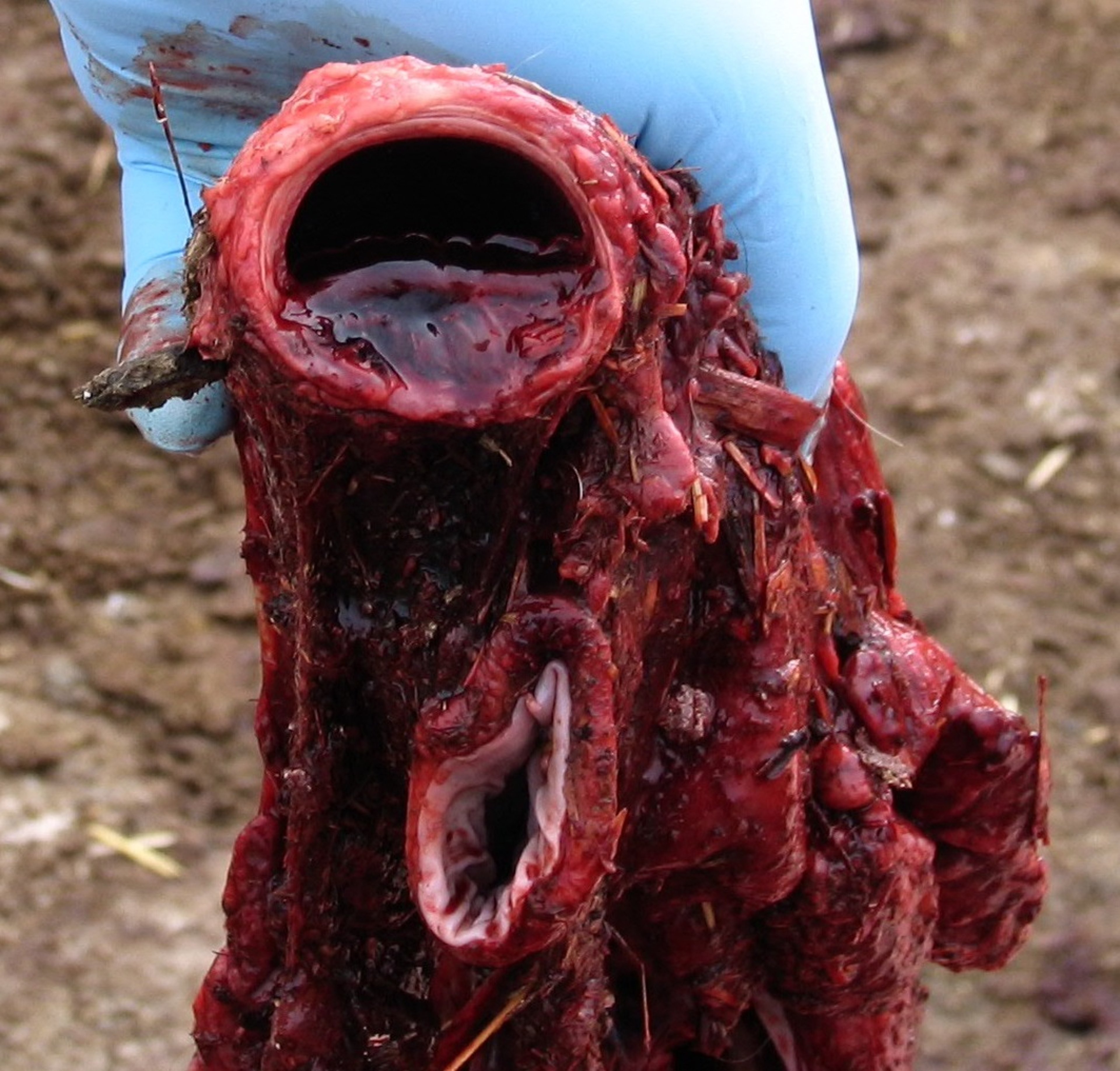Courtesy of Dr. John Campbell.
Tracheal stenosis syndrome is characterized by extensive edema of the mucosa and submucosa in the dorsal membrane of the lower trachea. The etiology is unknown. Proposed causes include respiratory viral and bacterial infections, trauma to the trachea from feed bunks, passive congestion and edema from excessive fat accumulation in the thoracic inlet, hypersensitivity reactions, and mycotoxins.
Tracheal stenosis syndrome occurs in feeder cattle in the later two-thirds of the feeding period throughout North America but may be most severe in the summer in southern plains (US) feedlots. Onset is sudden and appears to be associated with increased work of breathing stimulated by hot weather or exercise. The initial clinical signs are a loud inspiratory noise (stridor) and the onset of dyspnea. Forced movement causes the respiratory distress to worsen. The cattle become cyanotic and typically collapse and die of asphyxiation in < 24 hours. The disease is usually very sporadic, with small numbers of animals in the population affected.
In the acute form, necropsy lesions include edematous and/or hemorrhagic thickening of the submucosa and mucosa of the dorsal trachea extending from the mid-cervical area to the thoracic inlet. There is extensive hemorrhage in the trachea but no lung lesions. In the chronic form, lesions consist of hyperemia of the caudal third of the trachea with mucopurulent exudate in the trachea. In fatal cases, the tracheal lesion becomes completely obstructive.
Movement and handling of affected cattle should be limited. Antimicrobials and corticosteroids are recommended for the acute form, although the efficacy of treatment is not reported. Tracheostomy may be required in severe cases. Providing shade and cooling with fans or water sprays is recommended. Animals that recover are prone to relapse and should be culled.

